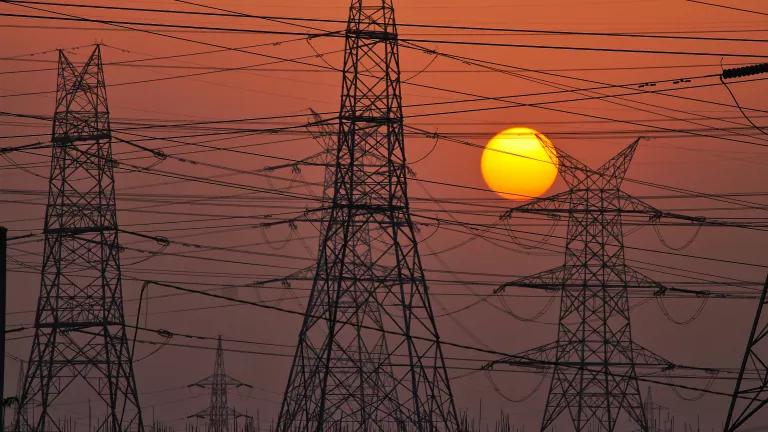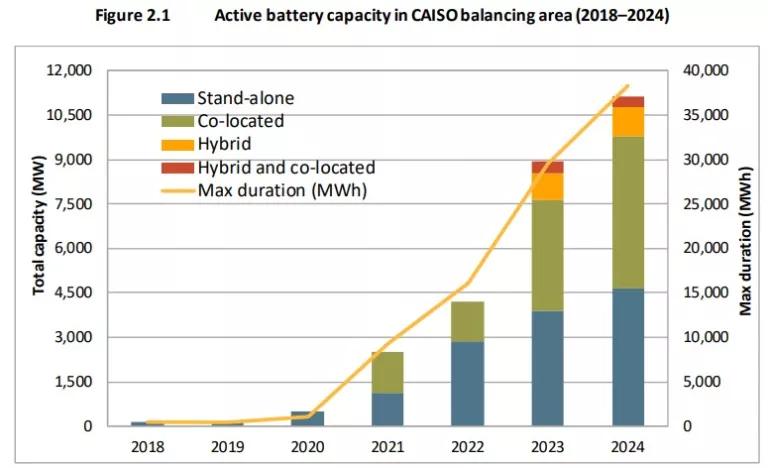Battery Storage Stands the Heat in California and the West
California’s fleet of batteries helped the grid not only survive the recent heat wave, but support neighbors in the broader West.

Ujjwal Kishore via Pexels
California is no stranger to heat waves. Since 1950, the frequency and intensity of extreme heat has increased dramatically in the state, with consequential impacts on the population. Even more concerningly, climate change is expected to accelerate this trend, meaning more days with dangerous, sky-high temperatures.
Intensely high temperatures are a risk to the safe and reliable operation of the grid, threatening electric infrastructure with dire implications for Californians. Power outages during extreme weather, especially heat waves, can pose a threat to human life. People unable to cool themselves down using tools like air conditioners are vulnerable to major health impacts including heat stroke and even death. In California’s September 2022 10-day heat wave, the state experienced a 5% increase in deaths.
This year, California experienced another heat wave, except this time it was double the length of the heat wave in 2022. Over 20 days, cities like Sacramento experienced the hottest temperatures on record. This event put tremendous pressure on California’s electricity system. The good news is that California’s grid–with the California Independent System Operator (CAISO) at the helm–was up to the challenge, demonstrating that a clean and reliable system is possible, even in record-breaking emergency conditions.
Market rules ensure batteries can come to the rescue.
Early on, California invested in building out a large fleet of battery storage to provide important reliability services for the grid. From 2020 to 2024, storage capacity installed in the CAISO balancing area increased from 500 MW to an astounding 11,200 MW–constituting the fastest growing resource type on the CAISO system. CAISO’s battery storage complements the state’s investment in and reliance on solar power, ensuring that the daytime clean energy benefits of solar can extend further into hours after the sun has set. The storage capacity installed on the system is also able to provide important additional functions for the grid, like helping maintain grid conditions within safe operating limits.

Active battery capacity in CAISO balancing area (2018-2024)
CAISO Special Report on Battery Storage, July 2024
The most recent heatwave wasn’t the first time storage came to the rescue in California. In the 2022 heat wave, a much smaller storage fleet was operationalized by CAISO to avoid rolling blackouts. In 2024, the much larger storage fleet–10 GWs strong–not only avoided blackouts, but did so without utilities and operators resorting to issue flex alerts that warn people to conserve power. This was by design: CAISO has taken the appropriate market measures to ensure that storage holds back its energy until the grid needs it the most.
Alongside other innovative market design enhancements, CAISO has implemented operational mechanisms to ensure that storage resources can be dispatched exceptionally if needed on days when there is a projected shortfall between electricity supply and demand. This is invaluable because storage resources are energy limited, which means that the availability of stored energy in a given hour is dependent on what happens in previous hours. Storage resources often respond to price spikes as soon as they occur to capitalize on revenue for these resources. But this can create concerns around storage availability during the absolute tightest hours of emergency operations on the grid. CAISO is proving that innovative policymaking can mitigate these concerns and improve storage reliability value.
Battery storage was key to easing grid stress and ensuring customers remained cool and business in business during the most recent heatwave. CAISO leveraged a fully-charged storage fleet that was ready when the grid operator needed it to maintain safe operations during the historic event. CAISO has catalyzed a virtuous storage cycle: good operational design unlocking greater reliability value from battery storage. And this cycle is poised to continue, earning CAISO its title as a leader in this space with significant insights to offer other regions.
California collaboration fortifies the western grid.
The benefits of CAISO’s foresight and storage investment have not just been isolated to California. Due to transformative expansion of integrated power market structures in the last several years, California was not only able to maintain clean, reliable power for itself, but offer extra power to neighboring states. CAISO’s Western Energy Imbalance Market (WEIM) served as a crucial component in balancing supply and demand to other Western states that also experienced high heat. Thanks to the WEIM, CAISO was able to export 8,000 MW of energy on July 8 and 9, and even became a net exporter during several hours. This helped vital cooling resources and electricity for other uses stay online, all at lower climate and financial costs to customers throughout the West.
This is a testament to the reliability value of the WEIM and the projected value of additional market services in the West. With CAISO’s day-ahead market (EDAM) approved by FERC to be implemented in Spring 2026, several western utilities have already committed or signaled their intent to join and reap the benefits of a market that will build on the success of the WEIM. This won’t be the last summer of record-breaking heat in the West, and EDAM stands to fortify the power grid against the impacts of climate change and help keep the lights on. It’s time for the region to work together to fully harness the geographic and resource diversity in front of them.
To fully realize the value of regional diversity in the EDAM, securing the broadest footprint of participation is essential. Recent analysis from the Brattle Group on the benefits of day-ahead markets in the West clearly states that a single market, the EDAM in particular, that covers most of the western interconnection will produce the highest benefits for the region.
Western states and stakeholders are working together on the Pathways Initiative to encourage broad participation in EDAM by creating a path to stand up a new governance structure with full independence to better capture western representation. The Pathways Initiative Launch Committee and CAISO will continue working swiftly and effectively over the next several months to progress the Initiative’s two-step proposal. NRDC supports this Initiative as a clear path toward western grid integration.
CAISO provides leadership for the West and beyond.
CAISO has stepped up to the plate and proven its ability to effectively balance the grid safely during historic, prolonged heat waves. The ISO is a world leader in energy storage, boasting the largest fleet of grid-scale batteries on the planet and pioneering market design elements that set an example for grids around the world. CAISO’s ability to support its neighbors in the broader West also exemplifies the power of harnessing regional grid integration as a tool to bolster collective grid resilience. Clearly, CAISO is doing something right, and other regions should follow their example.



